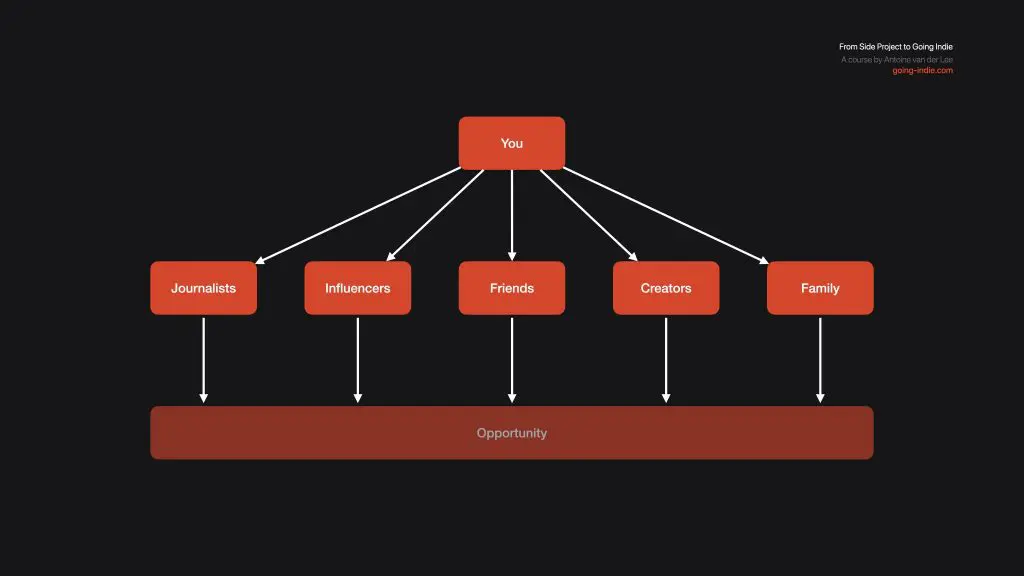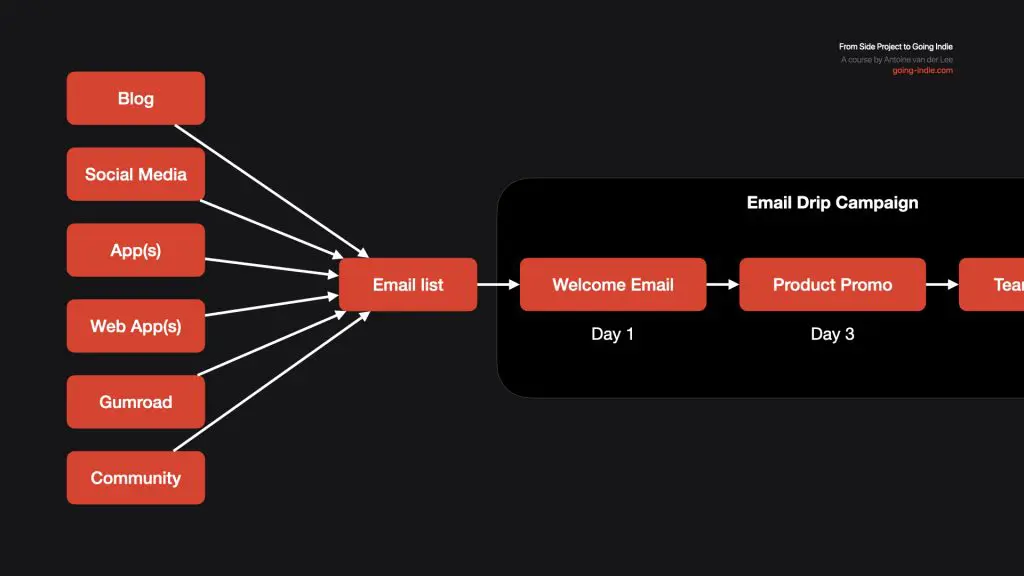Many engineers dream of indie development, leaving a full-time job behind, embracing freedom, and solely focusing on personal apps. While it’s a dream, it’s also a difficult step to take, especially if you’re going indie cold turkey without having any sources of income yet.
Therefore, after announcing my decision to go indie, I decided to create a course and share how I prepared myself for this by reducing risks and learning skills that would help me sustain a life as an independent developer. Today, I’m announcing that the full course is now available.
Check out the entire course at going-indie.com if you can’t wait to check it out.
What is indie development?
Indie development involves working solely and independently on personal apps. You decide what to work on, manage your time, and ensure a monthly income.
In theory, indie development also means more freedom of time. You get to decide how much time you’ll work and when. The flip side is that you need discipline, structure, project, and time management to make this work.
The Indie Developer Mindset
While it all sounds great, indie development isn’t only fun and much free time. I also truly believe it’s not made for everyone. If you happen to have a product that makes a lot of money, it’s likely a lot easier. However, I’ve spoken to indie developers with 50K Monthly Recurring Revenue that still felt pressure since it’s always unsure whether you’ll have that same income next year.
I transitioned from side projects to full indie in 2024. Working on side projects requires a similar discipline since you’ve got limited time available next to a full-time job. It’s the perfect way to start an indie journey, as you’ll have no income pressure. You’ll build up your imperium while living from your main job’s income.
More importantly, side projects develop an indie mindset you’ll need when you go full indie. Even though you might have made enough income to go indie, you must keep going to create a sustainable future. This is very doable but requires discipline, structure, and project management.
The first three modules of my course focus solely on this:
- Module 1: Introduction and Mindset
- Module 2: Goal Setting and Planning
- Module 3: Maintaining Productivity and Focus

Optimizing through development practices
Development practices help you make the most out of your time. How do you set up your project, write tests, design your products, or reuse the code you’ve already written?
If done well, you’ll become much more efficient. Imagine having a personal SDK of several packages that allows you to maintain a single piece of code and build new products much faster. Building faster and maintaining code easier means more time to continue developing new features, resulting in more income. It’s crucial for growth and to sustain an independent income.
Module 4 covers techniques I’ve developed over the years, but it also contains two one-hour long guest lectures from indie developers Jordi Bruin & Hidde van der Ploeg. Perspectives from other indie developers can have a significant impact on development practices.
Marketing, Audience, and Financial Growth

As engineers, we’re great at building solid products that can solve problems. Indie development becomes especially challenging when stepping out of your comfort zone. You’ll wear many hats as you will be responsible for marketing, growth, and financials.
Through marketing, audience building, and financial strategies, I’ve created six-figure income for both RocketSim and SwiftLee. This was during my full-time job, so they were still side projects with limited time available. I’ve read many books, listened to several podcasts, and tried all kinds of experiments to make the most of the products I’ve built. The learnings are shared in Modules 5 and 6.
Challenges that only start after going Indie
After going indie, I was surprised by several challenges. My structure and time management for side projects had prepared me for everything, but a few things changed after I became fully independent.
These learnings are combined in practical applications and (partly personal) case studies. It’s also important to remember there’s always a way back. You’ll gain many new skills during your indie journey that will make you an extra interesting candidate for many open job positions. In other words, what if things don’t work out?
A realistic mindset keeps you focused and might actually prevent the worst-case scenarios from happening.
- Module 7: Practical Applications and Case Studies
- Module 8: Sustaining Your Indie Career
- Module 9: Conclusion and Next Steps
Discounts on tools to support your indie journey
Using the right tools during indie development can make the difference between failing and succeeding. Over the years, I’ve discovered several tools and managed to get discounts to help you get easier access to them.
Many of the products you’ll get a discount for are covered during the course with explanations of how they made a difference for me. I’m expecting to add more discounts soon, but the current list is already attractive:
- Sketch
- Adapty
- Raycast
- HelpKit
- CleanShot
- Helm
- RocketSim (later this fall)
- ASO Suite
Remarkably, the total value of all discounts amounts to $147, which exceeds the cost of the course itself.
A community of indie developers
As part of the course, you’ll get access to a community of indie developers. In this online forum, you’ll be able to share your challenges and successes or keep yourself accountable through public deadlines.
Get started today
With an exclusive discount available until Friday, September 27th, there’s no better time than to start today.
You’ll get lifetime access to:
- 31 Individual video lessons
- Bonus resources, including a financial sheet to plan your point of going Indie
- Updates to all future course materials
- A community forum with all other Going Indie members
I’ll see you inside!